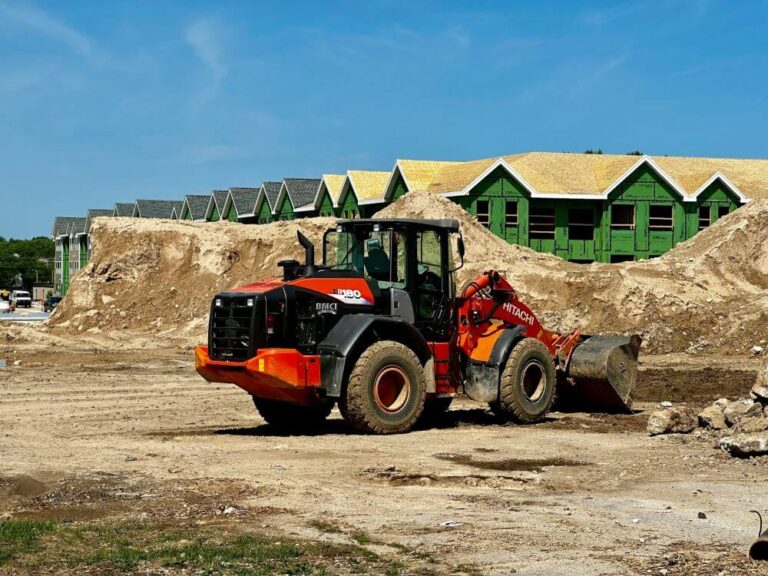The equipment you select directly impacts operational efficiency, project timelines, and overall costs. Whether you’re a contractor managing multiple sites or a business owner looking to streamline operations, you should make informed decisions about equipment purchases.
Analyzing various equipment options can seem overwhelming, but understanding key considerations can simplify this process, helping you choose solutions tailored to your needs. Take some time to assess your requirements and the pros and cons of each option for more successful outcomes.
Understanding Project Requirements
Before purchasing construction equipment, clearly define the requirements of your projects. Each project has unique specifications, such as the type of work, site conditions, and timelines. An excavation for a residential project differs significantly from that of a commercial site, warranting different equipment choices.
Assess the scope of work involved, including the degree of complexity and necessary machinery types needed for completion. Understand the job site environment: terrain, space limitations, and accessibility will dictate equipment suitability. Analyzing job specifications early on helps eliminate unnecessary purchases and ensures that you have the right tools to execute your project efficiently.
Evaluating Equipment Specifications
Once project requirements are established, the next step involves evaluating potential equipment specifications to determine their fit for your needs. This includes considering not only the power and capacity of a machine but also its features relative to the tasks at hand. Powerful excavators like the Volvo EC480 excavators provide advanced features designed for heavy-duty tasks, featuring powerful engines and robust hydraulic systems. Pay attention to payload capacity, lift height, and reach.
Examine fuel efficiency and operational costs because machinery with better efficiency can reduce overall project expenses in the long run. Maintenance needs and part availability also contribute to operational downtime, so selecting reliable brands and models that ensure timely repairs is integral to minimizing disruptions.
Considering Financing Options
For construction equipment, various financing avenues exist, ranging from outright purchases to leasing arrangements or installment loans. Each option has its benefits and drawbacks. Outright purchases involve significant initial investments but allow for full ownership, whereas leasing options usually require less upfront cost and may provide more flexibility in updating equipment.
Financing through manufacturers may offer competitive rates or promotional deals, which are advantageous for cash flow management. Assess your financial situation alongside your project’s duration and equipment lifespan to determine the best financing option. The right solution can enhance not only your purchasing power but also your overall financial strategy.
Assessing Total Cost of Ownership
When considering construction equipment purchases, assess the total cost of ownership (TCO) rather than just the upfront price. TCO encompasses all costs associated with acquiring and using the equipment throughout its lifespan. This includes operating expenses such as fuel, maintenance, insurance, and eventual resale value.
Understanding these costs helps streamline budgets and ensures that you’re investing wisely. A piece of equipment with a lower initial cost might end up being more expensive if it has higher fuel consumption or maintenance needs. You should also evaluate depreciation and potential tax implications that add further dimensions to the overall budgetary picture. By evaluating TCO, businesses can make informed decisions that balance upfront costs against long-term operational efficiency and profitability.
Evaluating Brand Reputation and Support
Selecting the right equipment involves more than just comparing specifications; brand reputation and post-purchase support will ensure reliable performance. A well-established brand often indicates a proven track record in quality and reliability. Effective customer support is indispensable for maintaining operational efficiency.
Having access to prompt service, quality parts, and knowledgeable representatives can minimize downtime and contribute to a smoother operational experience. Research customer reviews, ratings, and industry feedback to provide invaluable insights into brand performance and reliability. Factor in the local dealer’s availability for maintenance and repairs to further enhance your equipment experience over time so that your machinery remains in optimal working condition.
Future-Proofing Your Equipment Choices
As technology continues to evolve, don’t overlook the opportunity to future-proof your construction equipment choices. Invest in machines that can adapt to changing demands and lead to improved long-term value. Look for equipment that offers innovative technologies such as automation, telematics, and improved fuel efficiency. These features contribute to enhanced productivity and lower operational costs over time.
Take into account the potential for upgrades or retrofitting to accommodate future tasks or advancements. A forward-thinking approach maximizes current project efficiencies and prepares your business to adapt to emerging industry trends. Embracing equipment that can evolve alongside your operations will lead to sustained success and a competitive edge.
Equipment choices significantly impact project execution so take some time to evaluate key considerations and streamline purchasing decisions. Thoroughly understanding project requirements, evaluating specifications, and analyzing financial factors will ensure you make well-informed choices. Assessing the total cost of ownership, brand reputation, and future-proofing capabilities further aids in this strategic process. By implementing these strategies, contractors, and businesses can build a solid foundation for long-term success in the construction industry.


